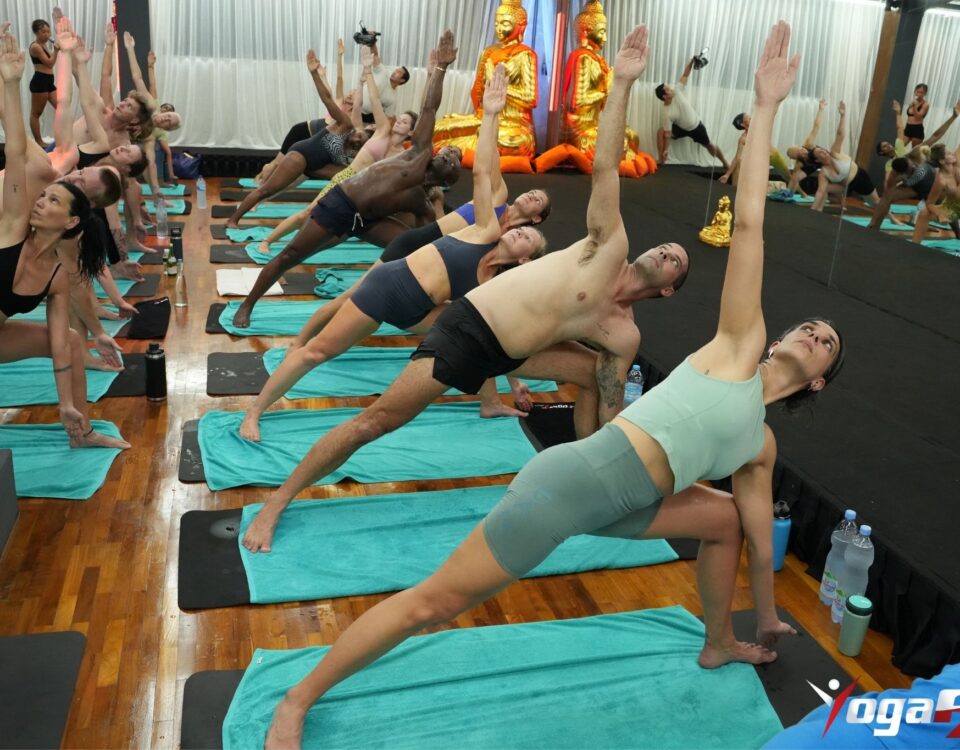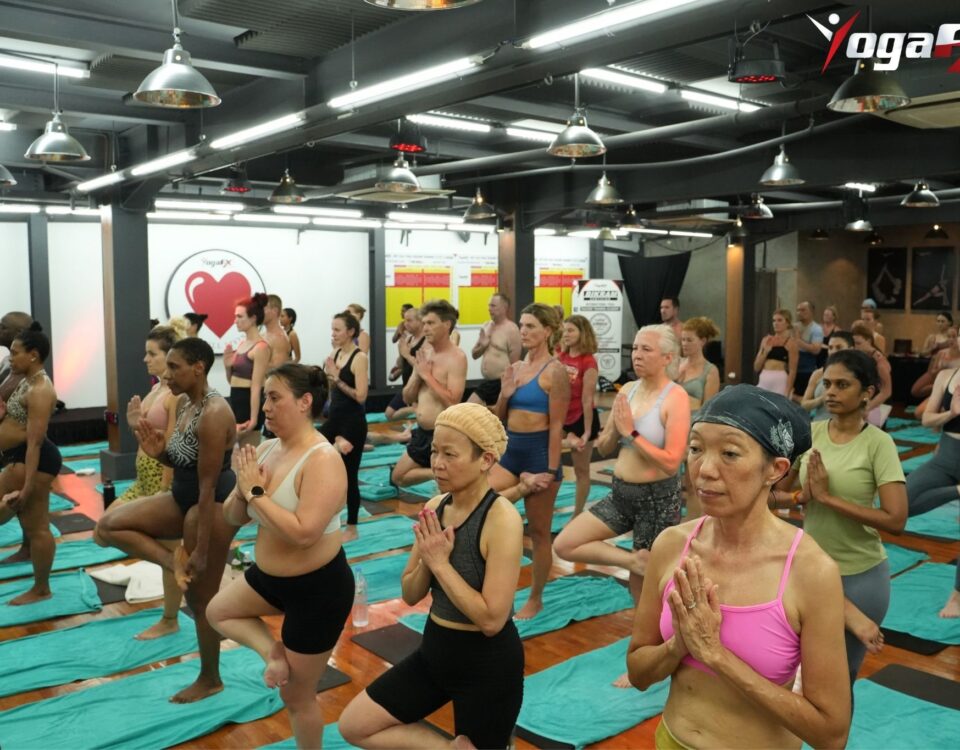
Are you tired of the relentless pressures of your current job? Do you find yourself yearning for a life filled with peace, purpose, and fulfillment? Becoming a yoga teacher might be the perfect solution for you.
Imagine transforming your passion for yoga into a rewarding career, where you can share the profound benefits of this ancient practice with others. Not only will you find personal serenity, but you’ll also have the opportunity to make a positive impact on people’s lives, all while earning a living. Take control of your future and embark on a journey that promises both inner peace and professional satisfaction.
Step 1: Explore Future Career Opportunities
The world of yoga teaching is rich with opportunities. Here are some potential income sources for various business models:
- Teaching at a Local Yoga Studio: As a yoga teacher at a local studio, you can expect to earn between £20 to £40 per class, depending on your experience and the studio’s location.
- Private Yoga Sessions: Offering private yoga sessions can significantly increase your income. You can charge between £50 to £100 per hour, providing personalized instruction to individual clients.
- Opening Your Own Studio: If you open your own yoga studio, your income potential increases, but so do your responsibilities. Depending on class sizes and pricing, studio owners can earn anywhere from £30,000 to £100,000 annually.
- Teaching Online: With the rise of virtual classes, teaching yoga online allows you to reach a global audience. Income from online classes can range from £10 to £30 per class, and you can supplement this with recorded sessions and online courses.
- Corporate Yoga: Teaching yoga in corporate settings is a growing trend. Corporate yoga instructors can earn between £50 to £150 per session, providing stress-relief and wellness programs for employees.
Understanding these opportunities will help you map out a sustainable and rewarding career.
Step 2: Requirements to Become a Yoga Teacher
To start your journey as a yoga teacher, it’s beneficial to have more than one year of yoga experience and to practice at least three times a week. This foundation helps in understanding the basics of yoga and developing a personal practice. However, it is important to note that there are no strict requirements to become a yoga teacher. What truly matters is your preparation and commitment to learning the postures and dialogue that we provide at the Yoga Instructor Academy. With dedication and a willingness to grow, you can successfully transition into the role of a yoga teacher, equipped with the knowledge and skills needed to guide others.
Step 3: Choose the Right Certification
Certification is a crucial step in becoming a credible yoga teacher. While many yoga companies create their own designations and certifications, they may not be part of a larger community. Yoga Alliance is the most recognised certification body, with over 7,000 schools and 80,000 yoga teachers registered. They offer RYT 200 (Registered Yoga Teacher) and RYT 500 certifications, which provide comprehensive training in teaching methods, anatomy, philosophy, and more. Additionally, specialised certifications, such as those for Bikram yoga, can enhance your credibility and open up more teaching opportunities.
Step 4: Prepare for the Costs
Becoming a certified yoga teacher involves several costs. Yoga teacher training programs can range from £1,000 to £3,000 without accommodation, depending on the depth and duration of the course. Additionally, you’ll need to consider the cost of professional memberships, such as those with Yoga Alliance, which provide ongoing support, resources, and credibility. Here are the costs associated with Yoga Alliance registration:
- Application Fee: $50
- Annual/Renewal Dues: $65
- Total Initial Registration Cost: $115
Budgeting for these expenses is essential as you plan your transition.
Step 5: Choose the Yoga Type
There are various yoga sequences, each with its own set of postures and variations. Common types include Hatha, Vinyasa, Ashtanga, and Bikram. Each style offers a different approach to practice, from gentle and restorative to vigorous and dynamic.
The original Bikram sequence, consisting of 2 breathing techniques and 26 asana postures, is an excellent foundation for any yoga teacher. This sequence is suitable for all levels, from beginners to advanced practitioners, and can be adapted into 45-minute, 60-minute, or 90-minute sessions. Mastering this sequence during your training will equip you with a ready-to-teach module, making your transition into teaching smoother and more effective.
Step 6: Learn the Dialogue
In yoga teaching, dialogue is more important than demonstration. A yoga teacher guides the class primarily through verbal instructions, helping students understand and perform the postures correctly. Learning how to say, what to say, and when to say it is crucial. Effective dialogue helps create a connection with students, provides clear guidance, and ensures a smooth flow of the class.
Step 7: Gain Practical Experience
Hands-on experience is invaluable in becoming a competent yoga teacher. Look for opportunities to teach community classes, assist in workshops, or volunteer at local studios. Make sure to join a real yoga teacher training program that emphasizes practical teaching experience, rather than one that feels more like a retreat or a philosophical class. This practical experience will build your confidence, improve your teaching skills, and help you establish a network within the yoga community.
Step 8: Build Your Brand
In today’s digital age, building a personal brand is crucial. Here’s a checklist to help you establish and grow your brand:
- Create a Professional Website: Showcase your expertise, class schedules, and contact information.
- Engage with Social Media: Use platforms like Instagram, Facebook, and YouTube to share content and connect with potential students.
- Start a Blog: Share your yoga journey, tips, and insights to attract and engage your audience.
- Network with Other Yoga Teachers: Join local and online communities to build connections and collaborate.
- Participate in Community Events: Host workshops, attend yoga festivals, and get involved in local events to increase your visibility.
Conclusion: Take the Leap Towards a Fulfilling Career
Becoming a yoga teacher is more than just a career change—it’s a transformative journey towards a more peaceful and meaningful life. By following these steps, you’ll be well on your way to sharing the gift of yoga with others while enjoying a rewarding career.
Ready to take the next step? Join our waiting list for hot yoga teacher training and start your journey today. Embrace the opportunity to find balance, peace, and a fulfilling career as a yoga teacher.


